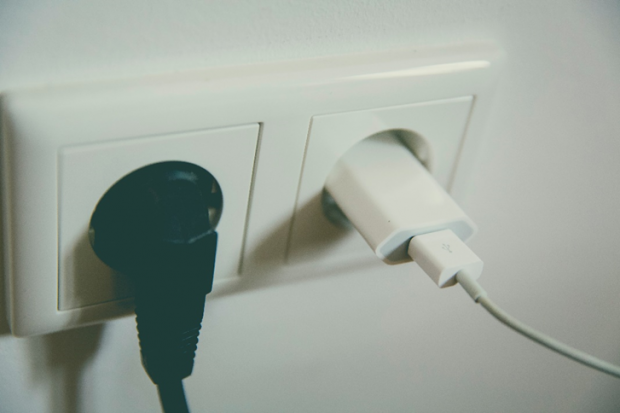Watts vs Joules: Understanding the Difference in Energy Units
Watts and Joules are both units of energy, but they are used to measure different aspects of energy. Here's a breakdown of the difference between the two:
- Watts (W) measure power, which is the rate at which energy is used or produced. It's the amount of energy used per unit of time. One watt is defined as one joule per second (1 W = 1 J/s). So, if a device uses one watt of power, it's using one joule of energy every second.
- Joules (J) measure energy, which is the ability to do work or produce heat. It's the total amount of energy that has been used or produced. One joule is defined as the amount of energy required to move a one Newton force one meter in the direction of the force (1 J = 1 Nm). So, if a device uses one joule of energy, it's using a specific amount of energy, regardless of how long it takes to use it.
Still unsure what the difference is and wondering 'are watts and joules the same?' To put it in simpler terms, watts measure how fast energy is being used, while joules measure the total amount of energy used. For example, a 100-watt light bulb uses 100 watts of power (or 100 joules of energy per second) to produce light. If you leave the light bulb on for one hour, it will use 360,000 joules of energy (or 360 kilojoules). Watts and joules are both important units of energy, but they measure different things. Watts measure the rate of energy use, while joules measure the total amount of energy used.
Typical household items we can measure in watts and joules:
Household items have different power ratings and energy consumption levels, depending on their type, size, and usage patterns. For instance, an incandescent light bulb typically uses 60-100 watts of power, while an LED light bulb may use only 7-10 watts. A laptop computer generally consumes 20-75 watts, while a desktop computer can consume up to 500 watts of power.
Other appliances, such as refrigerators, air conditioners, and televisions, have higher power ratings and energy consumption levels.
When it comes to measuring the energy consumption of these household items in joules, we can use the power rating and the duration of use to estimate the total energy used. For example, a 60-watt light bulb that is used for one hour would consume 216,000 joules of energy (60 watts x 3,600 seconds). Similarly, a 1,000-watt air conditioner that is used for one hour would consume 3,600,000 joules of energy (1,000 watts x 3,600 seconds).
It's important to keep in mind that the actual energy consumption of a device depends on various factors, such as how often it is used, how long it is used, and how efficiently it operates. Additionally, newer and more energy-efficient models of appliances and electronics may consume less energy than older or less efficient models, making it important to consider the specific model and features of the device when estimating its energy consumption.
How to stay safe when using these household items:
To stay safe when using household items, here are a few tips to keep in mind:
Follow the manufacturer's instructions: Always read and follow the manufacturer's instructions for using the device. This includes information about how to safely operate, clean, and maintain the device.
Use devices in well-ventilated areas: Appliances such as refrigerators and air conditioners generate heat and can cause carbon monoxide build-up if used in poorly ventilated areas. Make sure to use them in well-ventilated areas to reduce the risk of carbon monoxide poisoning.
Don't overload electrical outlets: Overloading electrical outlets by plugging too many devices into one outlet can cause overheating and potentially lead to a fire. Use power strips or surge protectors to distribute the load among multiple outlets and avoid using extension cords as a permanent solution.
Unplug devices when not in use: Some devices, such as chargers and televisions, continue to draw power even when not in use. Unplugging these devices when not in use can save energy and reduce the risk of fire or electrical hazards.
Keep flammable materials away from heat sources: Appliances that generate heat, such as stovetops and heaters, should be kept away from flammable materials such as curtains, paper, and clothing.
Monitor children and pets around appliances: Make sure children and pets are supervised when around household appliances and keep them away from devices that may pose a hazard, such as hot stove tops or sharp knives.
By following these tips and practicing good safety habits, you can reduce the risk of accidents and ensure that your household devices operate safely and efficiently.
In Conclusion
In conclusion, watts and joules are both units of energy, but they measure different aspects of energy. Watts measure power, which is the rate at which energy is used or produced, while joules measure energy, which is the ability to do work or produce heat. It's important to keep in mind the power ratings and energy consumption levels of household items, as well as to follow safety guidelines when using them to reduce the risk of accidents and ensure that they operate safely and efficiently. By understanding the difference between watts and joules and practicing good safety habits, you can use your household devices effectively and safely.
See Now: NASA's Juno Spacecraft's Rendezvous With Jupiter's Mammoth Cyclone
* This is a contributed article and this content does not necessarily represent the views of scienceworldreport.com





Join the Conversation